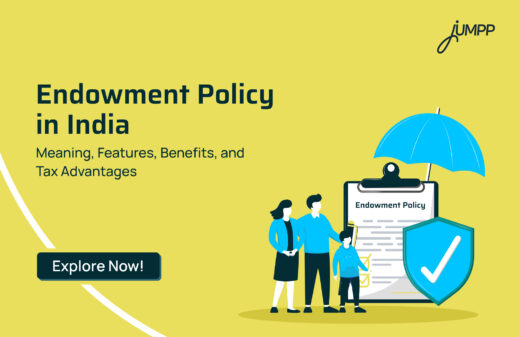Life Insurance: A Financial Tool That Protects Your Family’s Tomorrow

India’s life insurance market is expected to cross USD 150.6 billion in premiums by 2026, a clear sign that more families today are actively seeking financial protection. With growing awareness and easy access through digital platforms, it now comes up in almost every financial planning conversation.
But before choosing any plan, it’s important to understand what life insurance is, why people consider it necessary, and how it actually supports your family during tough times.
What is life insurance?
Life insurance is a contract between the policyholder (you) and an insurance company. Under this contract, you pay premiums, and your nominee gets a fixed amount after your death. This helps secure your family’s financial future in the event of an unforeseen event.
Let’s understand the life insurance meaning with an example:
For instance, you are the breadwinner of the family. By investing in life insurance, you ensure that your family will have financial support if something were to happen to you. The lump sum payment will cover their expenses, such as education, loans, and day-to-day living.
Basic Life Insurance Terminologies
- Insured: The person whose life is covered by the insurance policy. In life insurance, the insured is the individual whose death triggers the payment to the nominee.
- Sum Assured: The amount the insurance company promises to pay to the nominee in the event of the policyholder’s death.
Golden Principles of Life Insurance
It works on a few basic rules that protect both the company and you.
Let’s look at these key principles.
- Insurable Interest: You should have a financial connection with the person you’re insuring. Basically, their loss should impact you financially.
- Utmost Good Faith: Both you and the insurance company must be honest and share all important details.
- Proximate Cause: The reason for the claim should directly relate to the insured person’s life or death.
- Contribution: If you have more than one life policy, the companies will share the claim amount fairly.
- Indemnity (limited in life insurance): Although life insurance pays a fixed sum, the concept ensures compensation for financial loss.
What are the Different Types of Life Insurance
Here are several types of life insurance policies that you can choose from!
- Term Life Insurance Meaning: Provides coverage for a specific period (e.g., 10, 20, or 30 years). If the insured dies during this term, the death benefit is paid out. It’s generally more affordable but doesn’t build cash value.
- Whole Life Insurance Meaning: Offers lifetime coverage with fixed premiums and includes a cash value component that grows over time.
- Child Insurance Plans: Designed to secure a child’s future financial needs, these plans provide funds for significant milestones like education and marriage.
- Unit Linked Insurance Plans (ULIPs): Combine insurance coverage with investment options, allowing policyholders to invest in equity or debt funds based on their risk appetite.
Once you understand these options, it becomes easier to choose an insurance policy that aligns with your financial goals.
Looking to explore more than life insurance? Discover the complete list of insurance types in India.
What is the life insurance process in India?
1. Buying a Life Insurance Policy
It involves the following steps:
- Research Plans: Understand your needs, compare policy types, coverage, and premium options.
- Choose the Right Policy: Select a plan that aligns with your financial goals and budget.
- Application Form: You need to provide personal, financial, and health-related details accurately. Some insurers require a medical test to assess your health condition.
- Premium Payment: Pay the premium through your preferred mode to initiate the policy.
- Policy Issuance: Once documents and medical reports are verified, the insurer issues the policy with full details.
2. How to claim life insurance after death
The process generally includes:
- Notify the Insurer: The nominee must inform the insurance company about the policyholder’s death at the earliest.
- Submit Documents: Provide the death certificate, claim form, policy documents, and any additional papers requested by the insurer.
- Verification by Insurer: The company reviews the documents and may conduct further checks if needed.
- Claim Settlement: Once verified and approved, the insurer releases the sum assured to the nominee.
What are the Factors that affect life insurance premiums?
1. Personal
- Age: Younger individuals pay lower premiums compared to older individuals.
- Health Condition: Pre-existing illnesses, medical history, or frequent health issues can increase premiums.
- Family Medical History: It may increase your premium.
2. Lifestyle & Occupation
- Smoking or Tobacco Use: Smokers usually pay higher premiums due to increased health risks.
- Alcohol Consumption: Excessive drinking may raise insurance costs.
- High-Risk Occupations: Jobs involving physical danger (mining, construction, firefighting, etc.) lead to higher premiums.
3. Policy-Related
- Sum Assured: Higher coverage leads to higher premiums.
- Policy Type: Plans with savings/investment components (like ULIPs or endowment) generally cost more.
- Policy Term: Longer coverage periods may increase your premium.
- Premium Payment Frequency: Monthly payments may cost slightly more than annual payments due to administrative charges.
What Are the Advantages of Life Insurance?
Life insurance does more than just provide a payout; here are the benefits offered:
1. Future Savings: Some plans include savings or investment components that help you build a financial corpus for future needs.
2. Long-Term Financial Planning: It helps you plan for the future by providing disciplined savings, predictable returns (in certain plans), and long-term financial stability.
3. Tax Benefits: Premiums paid towards life insurance policies are eligible for tax deductions under Section 80C of the Income Tax Act, and the maturity or death benefits received are usually tax-free under Section 10(10D).
4. Legacy Planning: Life insurance allows you to leave behind a guaranteed amount for your loved ones, helping them maintain their lifestyle or fulfil important financial commitments.
5. Debt & Loan Coverage: Helps your family repay outstanding liabilities like home loans, personal loans, or credit card debt.
History of Life Insurance in India
The concept of insurance in India dates back to the 1800s.
- 1818: The Oriental Life Insurance Company, the first life insurance company, was established in Kolkata, marking the start of modern insurance in India.
- 1956: The Indian government nationalised the life insurance sector and merged over 240 private insurers to create the Life Insurance Corporation of India (LIC).
- 2000: The insurance sector was liberalised, allowing private companies to enter the Indian market, increasing competition and product innovation.
- 2025 and Ahead: Today, modern apps and online platforms have made buying life insurance faster, simpler, and more transparent for every Indian customer.
Final Thought
Life insurance is an important tool for financial security in India. It not only provides death benefits but also offers a variety of investment options through products like ULIPs and endowment plans. Choosing the right policy ensures your loved ones stay protected today and in the years ahead.
Interested in a zero-balance savings account? Open one quickly with the best savings app in India!
Life Insurance Meaning: FAQs
Life insurance cover refers to the amount that the insurer will pay to the nominee in case of the policyholder’s death. This cover should be sufficient to meet the financial needs of the family.
It’s a plan that gives money to your family if something happens to you. You pay a small amount regularly, and they get support when needed.
There are term, whole life, endowment, ULIPs, and more. Each plan offers different benefits and returns.
Inform the insurer and submit the claim with documents. Once verified, the amount is sent to the nominee.
You must do proper research and then pick a policy that fits your needs and budget. You can do it through an insurance agent, a life insurance office, or online.
Check your coverage needs, sum assured, premium, and policy type. Also, review the insurer’s claim settlement ratio and exclusions to ensure the policy gives complete protection.






